A Patient's Guide to Septic Arthritis of the Hip in Children
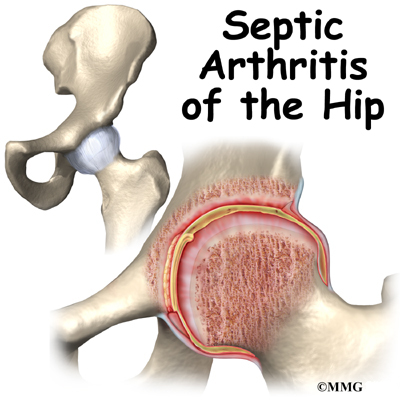
Introduction
Septic arthritis of the hip in children is a painful joint condition caused by a bacterial infection. Septic arthritis of the hip can occur at any age from newborn to older child. The infection is caused by different bacteria at different ages, but the disease behaves the same. About half of all cases occur in children younger than three years old.
In most cases the condition is monoarticular, meaning it only affects one joint. The knee is most often involved, followed by the hip then ankle. If untreated, disastrous results can occur, especially in the hip.
This guide will help you understand
what part of the hip is involved
what causes the condition
what treatment options are available
Anatomy
What part of the hip is affected?
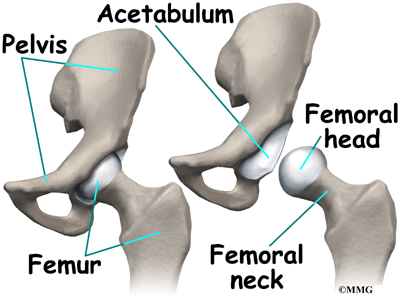
The hip joint is where the femur (thighbone) connects to the pelvis. The joint is made up of two parts. The upper end of the femur is shaped like a ball. It is called the femoral head. The femoral head fits into a socket in the pelvis called the acetabulum. This ball and socket joint is what allows us to move our leg in many directions in relation to the body.
Causes
What causes this condition?
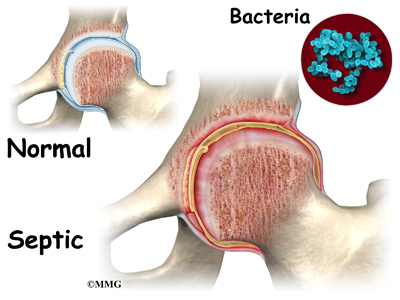
Infections are a part of growing up. Young children commonly get many different types of bacterial infections, such as sore throats, skin infections and wound infections from scrapes and cuts. As we are exposed to these infections, our immune system develops better protection from these infections. When a bacterial infection occurs anywhere in the body, bacteria from the infected area can enter the bloodstream. These bacteria are then transported all over the body. Usually our immune system kills these bacteria quickly, before they have an opportunity to begin to reproduce and cause another infected area. Because young children have not completely developed their immune system, their bodies are not quite as good at rapidly destroying the bacteria.
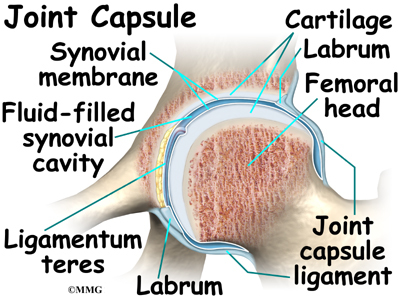
Sometimes, these bacteria in the bloodstream move into the hip joint. If they are not destroyed quickly, they can set up an infection. Blood containing bacteria moves from the bone across the synovial membrane into the joint. The synovium is a protective layer of fluid around the joint. Bacteria can also move into the joint cavity indirectly by moving from the growth plate at the end of the femur (thighbone) into the joint.
It's not always clear what causes septic arthritis to get started. In some cases an injury seems to lead to a joint becoming infected. In other cases, the child may have other medical problems that create an altered immune system and reduce the ability of the body to fight off an infection. Either one of these problems can increase the risk of infection.
Low-birth weight babies are at risk for infection from the commonly present bacteria Streptococcus also known as strep. Invasive procedures such as fetal monitoring through the scalp or drawing blood from the heel can also introduce the bacteria into the bloodstream. Once bacteria are in the bloodstream, they can settle in the hip joint and create an infection.
Infection from Staphylococcus (staph infection) can occur just from being in the hospital setting. These bacteria are very common in the hospital, where many patients undergoing treatment have active infections. The chance of exposure is much greater while the child is in the hospital rather than at home. Both strep and staph infections affect children from birth to three months and children older than two or three years old most often.
There are many other different bacteria and underlying infections besides the two named here. In each case the infection behaves a little differently and is more common in a slightly different age group.
Bacteria that can cause meningitis can also cause septic arthritis of the hip. The bacteria enter through the nose and throat, then quickly enter the bloodstream and travel to distant joints.
Symptoms
What does this condition feel like?
Some children with septic hip arthritis have no apparent symptoms at first. The most common symptoms are sudden fever, hip pain and a limp. The young child will commonly refuse to put weight on the affected leg. The child who can walk may limp. Infants may be irritable and refuse to eat.
Pain or tenderness is usually in the front of the hip and may travel down to the knee. The skin may be warm and red over the area of tenderness. Both are signs of inflammation from the infection in the joint.
Hip extension or straightening the hip back and rotating it inward increase the painful symptoms. The child prefers to lie on his or her back with the hip flexed (bent) and externally rotated (rotated outward). This position takes the pressure off the joint.
Diagnosis
How do doctors identify this condition?
Early diagnosis is important. The infection in the hip joint can damage the joint and the sooner treatment is started the better. The history and physical examination are usually enough to make your doctor highly suspicious of septic hip arthritis. Blood tests help confirm the diagnosis. A high erythrocyte sedimentation rate (ESR) or "sed rate" and a white blood count greater than 12,000 are red flags to suggest inflammation or infection. Sudden onset of symptoms with fever and positive blood tests all point to septic arthritis.
The doctor will look for signs of swelling, tenderness, and check the child's range of motion. The spine is also assessed for any problems that could cause hip pain. X-rays are often ordered. Joint fluid may be removed with a needle using ultrasound to guide the needle into the joint. Lab tests on the fluid will identify the exact cause if the problem is a septic hip.
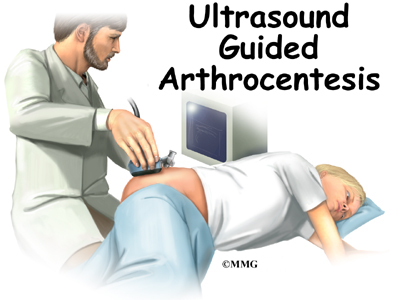
Treatment
What can be done to relieve the symptoms?
Nonsurgical Treatment
Antibiotic therapy is the first step in treatment. The type of antibiotic given depends on which bacteria are present. Results are best if antibiotics are started as soon as possible after the diagnosis of a joint infection. First, medication is given intravenously (directly into blood stream) for about seven days and then orally (pills taken by mouth) for another two or three weeks.
Surgery
Surgery is usually required to drain the joint of all infected material. The joint is thoroughly rinsed with a saline solution. The goal is to remove any products of inflammation and reduce the number of bacteria present. Both actions give the antibiotics a better chance of working quickly. A drain may be placed in the joint for 24 to 48 hours to clear any fluid that has leaked into the nearby tissues.
The surgeon may have to drill into the bone if there is any sign of bone infection. This procedure helps bring increased blood flow to the area to clean away bacteria, infection, and dead tissue.
Rehabilitation
What should I expect after treatment?
Nonsurgical Treatment
The child should respond to the antibiotics with decreased fever and increased energy and appetite. Hip range-of-motion will return to normal and the child will be able to put weight on the hip (leg) again. Children who can walk will gradually resume normal activities. Infants and babies will also start holding the head up, eating, and moving freely on the floor again.
After Surgery
Bed rest is advised for the first 24 hours to allow time for inflammation of the synovial fluid to resolve. The physical therapist will perform and teach family members how to do passive range-of-motion (motion performed by others) for the entire leg. Movement is very important to prevent other joint problems from developing.
More surgery may be needed later if the hip loses too much motion or develops deformity and/or dislocation. Release of tendons and muscles, bone grafts, or reconstruction surgery may be needed.
Long-term follow-up is very important for any child who has had septic arthritis. This is true even for those children who have had early diagnosis, early treatment, and a good result. Changes can occur later in the hip with degeneration of the joint leading to treatment failure.
|













